- Factors to Consider When Choosing Aubergines for Open Ground
- Climate and Temperature
- Hardiness Zone
- Temperature Range
- Microclimates
- Season Length
- Soil Temperature
- Soil Type and pH
- Planting and Growing Techniques
- 1. Choose the Right Location
- 2. Start Indoors
- 3. Transplanting
- 4. Watering and Fertilizing
- 5. Support and Pruning
- 6. Pest and Disease Control
- 7. Harvesting
- 8. Storage
- Spacing and Support
- Plant Spacing
- Trellising or Staking
- Pruning
- Pest and Disease Resistance
- Pests
- Diseases
- Harvesting and Storage
- Taste and Culinary Uses
- Availability and Cost
- “Question-Answer”
- What are the important factors to consider when choosing aubergines for open ground?
- How does the climate affect the growth of aubergines in open ground?
- What type of soil is best for growing aubergines in open ground?
- Are there different varieties of aubergines to choose from for open ground cultivation?
- Can aubergines be grown in containers or pots?
- “Video” Aubergine/Eggplant Trees
Aubergines, also known as eggplants, are a versatile vegetable that can be used in a variety of culinary dishes. Whether you’re a home gardener or a commercial farmer, choosing the perfect aubergine variety for open ground cultivation is essential for a successful harvest.
One of the most important factors to consider when selecting aubergines for open ground is the climate. Aubergines are warm-season crops that require a long growing season with consistent temperatures above 70°F (21°C). They do best in areas with hot summers and mild winters, but can also be grown in cooler climates with the help of row covers or greenhouses.
Additionally, it’s important to choose a variety that is suited to your specific soil conditions. Aubergines prefer well-drained soil that is rich in organic matter. They thrive in soils with a pH level between 5.5 and 6.8, making it important to test the soil and amend it as needed before planting.
Lastly, consider the desired characteristics of the aubergine fruit. There are various shapes, sizes, and colors available, so it’s important to choose a variety that meets your preferences and culinary needs. Popular varieties include the classic ‘Black Beauty’, the long and slender ‘Italian Egg’, and the small and round ‘Fairy Tale’.
Remember to also consider disease resistance when choosing aubergine varieties for open ground cultivation. Look for varieties that are resistant to common diseases such as verticillium wilt, bacterial wilt, and phytophthora.
By taking these factors into consideration, you can ensure that you choose the perfect aubergines for open ground cultivation and enjoy a plentiful harvest of this delicious and versatile vegetable.
Factors to Consider When Choosing Aubergines for Open Ground
1. Climate and Temperature
- Aubergines require warm temperatures and thrive in a Mediterranean climate.
- Choose varieties that can tolerate cooler temperatures if you live in a region with a shorter growing season or cooler summers.
2. Disease Resistance
- Check the seed packet or labeling for information on disease resistance.
- Select varieties that are known to be resistant to common diseases such as verticillium wilt, mosaic virus, and bacterial wilt.
3. Fruit Size and Shape
- Consider the desired end use of the aubergines.
- Choose larger fruit varieties for roasting or stuffing, and smaller fruit varieties for grilling or stir-frying.
- Decide between standard or elongated shapes based on personal preference and culinary needs.
4. Skin Color and Texture
- Aubergines come in various skin colors, including purple, black, white, and striped.
- Select varieties with skin textures that suit your cooking preferences, such as smooth or ribbed.
5. Yield and Harvest Period
- Consider the expected yield per plant and the length of the harvest period.
- Choose varieties that can provide a high yield and have a longer harvest period, especially if you plan to preserve or store the aubergines.
6. Taste and Culinary Uses
- Consider the flavor profile of the aubergines, as some varieties may taste bitter or mild.
- Research the culinary uses of different varieties to ensure they align with your cooking preferences and recipes.
7. Plant Size and Growth Habit
- Take into account the space available in your garden or open ground.
- Choose compact or bushy varieties if you have limited space, or sprawling varieties if you have a larger area.
8. Seed Availability and Source
- Consider the availability of seeds and their source, ensuring they are obtained from a reputable supplier.
9. Personal Preferences and Priorities
- Ultimately, choose aubergines that align with your personal preferences, cooking needs, and gardening priorities.
- Consider factors such as color, texture, flavor, and disease resistance that are most important to you.
By considering these factors, you can select the perfect aubergines for open ground that will thrive in your specific climate and meet your culinary needs.
Climate and Temperature
When choosing aubergines for open ground, it is important to consider the climate and temperature of your location. Aubergines are warm-season crops that require a long growing season with plenty of heat and sunlight to thrive. Here are some key factors to consider when it comes to climate and temperature:
Hardiness Zone

Aubergines are not cold-hardy plants and are sensitive to frost. It is essential to know the hardiness zone of your area to determine if it is suitable for growing aubergines in open ground. Aubergines generally require a minimum temperature of 60°F (15°C) and thrive in zones 9-11.
Temperature Range
Aubergines prefer a warm climate and perform best when temperatures consistently range between 70°F (21°C) and 85°F (29°C). Higher temperatures can lead to reduced fruit set and quality. Extreme heat above 95°F (35°C) can cause sunscald and wilting. It is important to monitor the temperature and provide shade if necessary.
Microclimates
Microclimates within your garden or region can influence the success of growing aubergines. Factors such as sunlight exposure, wind protection, and proximity to walls or structures can create microclimates with different temperature ranges. It is recommended to choose a location that receives full sun exposure, protected from strong winds.
Season Length
Aubergines require a long growing season to produce mature fruits. Typically, it takes 70-85 days for aubergine seedlings to reach harvest stage. It is important to consider the length of your growing season and choose early-maturing varieties or start seeds indoors to extend the growing period.
Soil Temperature
The soil temperature is crucial for successful aubergine growth. Aubergine seeds germinate best when the soil temperature is around 75°F (24°C). It is recommended to use a soil thermometer to ensure the soil has reached the proper temperature before planting aubergine seeds or transplants.
By considering the climate and temperature factors mentioned above, you can select the perfect aubergines for open ground that will thrive and produce a bountiful harvest in your specific location.
Soil Type and pH
The type of soil you have in your garden can greatly affect the success of your aubergine plants. Aubergines prefer well-draining soil that is rich in organic matter. Sandy loam or loamy soil is ideal for aubergines as it allows for proper drainage while retaining enough moisture and nutrients.
The pH level of the soil is also important. Aubergines thrive in slightly acidic to neutral pH levels, ideally between 6.0 and 7.0. You can test the pH level of your soil using a home testing kit or by sending a sample to a local agricultural extension office.
If your soil is too acidic, below a pH of 6.0, you can raise the pH by adding lime. On the other hand, if your soil is too alkaline, above a pH of 7.0, you can lower the pH by adding sulfur or peat moss.
It is important to prepare the soil properly before planting your aubergines to ensure optimal growing conditions. Remove any weeds, rocks, or debris from the planting area. You can also add compost or well-rotted manure to improve the soil structure and fertility.
| Soil pH | Suitability for Growing Aubergines |
|---|---|
| 5.5 or below | Too acidic, add lime to raise the pH |
| 6.0 – 7.0 | Ideal pH range for aubergines |
| 7.5 or above | Too alkaline, add sulfur or peat moss to lower the pH |
By considering the soil type and pH level in your garden, you can create the perfect growing environment for your aubergines. This will ensure healthier plants, better fruiting, and a bountiful harvest.
Planting and Growing Techniques
1. Choose the Right Location

When selecting a location for planting aubergines, it is important to choose an area that receives full sun for at least 6-8 hours a day. The soil should be well-draining and rich in organic matter. Avoid planting aubergines in areas prone to frost or strong winds.
2. Start Indoors
Aubergine seeds need a long growing season, so it is recommended to start them indoors 8-10 weeks before the last expected frost date. Sow the seeds in seed trays or small pots filled with a seed starting mix. Keep the soil moist and maintain a temperature of 70-75°F (21-24°C). Once the seedlings have grown to a height of about 4-6 inches, they can be transplanted to the garden.
3. Transplanting
Transplant the seedlings to the garden after all danger of frost has passed and the soil has warmed up. Space the plants about 2-3 feet apart to allow for proper air circulation. Gently remove the seedlings from their containers, being careful not to disturb the roots, and place them in pre-dug holes. Backfill the holes with soil and firm it gently around the plants.
4. Watering and Fertilizing
Water the plants regularly, keeping the soil evenly moist but not waterlogged. Avoid overwatering, as this can lead to root rot. Apply a balanced fertilizer every 2-3 weeks to promote healthy growth and fruit production.
5. Support and Pruning
Aubergine plants can become top-heavy with fruit, so it is recommended to provide support in the form of stakes or cages. This will help to prevent the plants from bending or breaking under the weight of the fruit. Additionally, pruning can help to control the growth of the plants and promote better air circulation, reducing the risk of diseases.
6. Pest and Disease Control
Monitor the plants regularly for any signs of pests or diseases. Common pests that affect aubergines include aphids, flea beetles, and spider mites. Use organic pest control methods such as insecticidal soaps or neem oil to control these pests. Additionally, practicing crop rotation and maintaining good sanitation in the garden can help to prevent the spread of diseases.
7. Harvesting
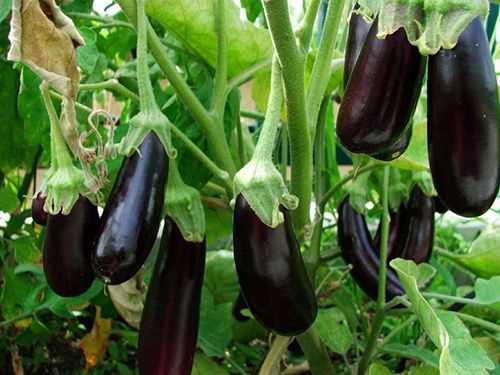
Aubergines are ready for harvest when they have reached a glossy appearance and are firm to the touch. Use a sharp knife or pruning shears to cut the fruit from the plant, leaving a short stem attached. Harvesting regularly will encourage the plant to continue producing more fruit throughout the season.
8. Storage
Aubergines can be stored in a cool, dry place for up to a week. Avoid storing them in the refrigerator, as this can cause the fruit to deteriorate more quickly. It is best to use fresh aubergines as soon as possible for the best flavor and texture.
Spacing and Support
Proper spacing and support are essential for growing healthy aubergines in open ground. Here are a few factors to consider:
Plant Spacing
- Provide adequate spacing between the aubergine plants to ensure proper air circulation and reduce the risk of diseases.
- Space the plants at least 24 to 36 inches apart in rows that are about 36 to 48 inches apart.
- This spacing will allow the plants to grow without crowding each other and ensure they have enough room for healthy root development.
Trellising or Staking
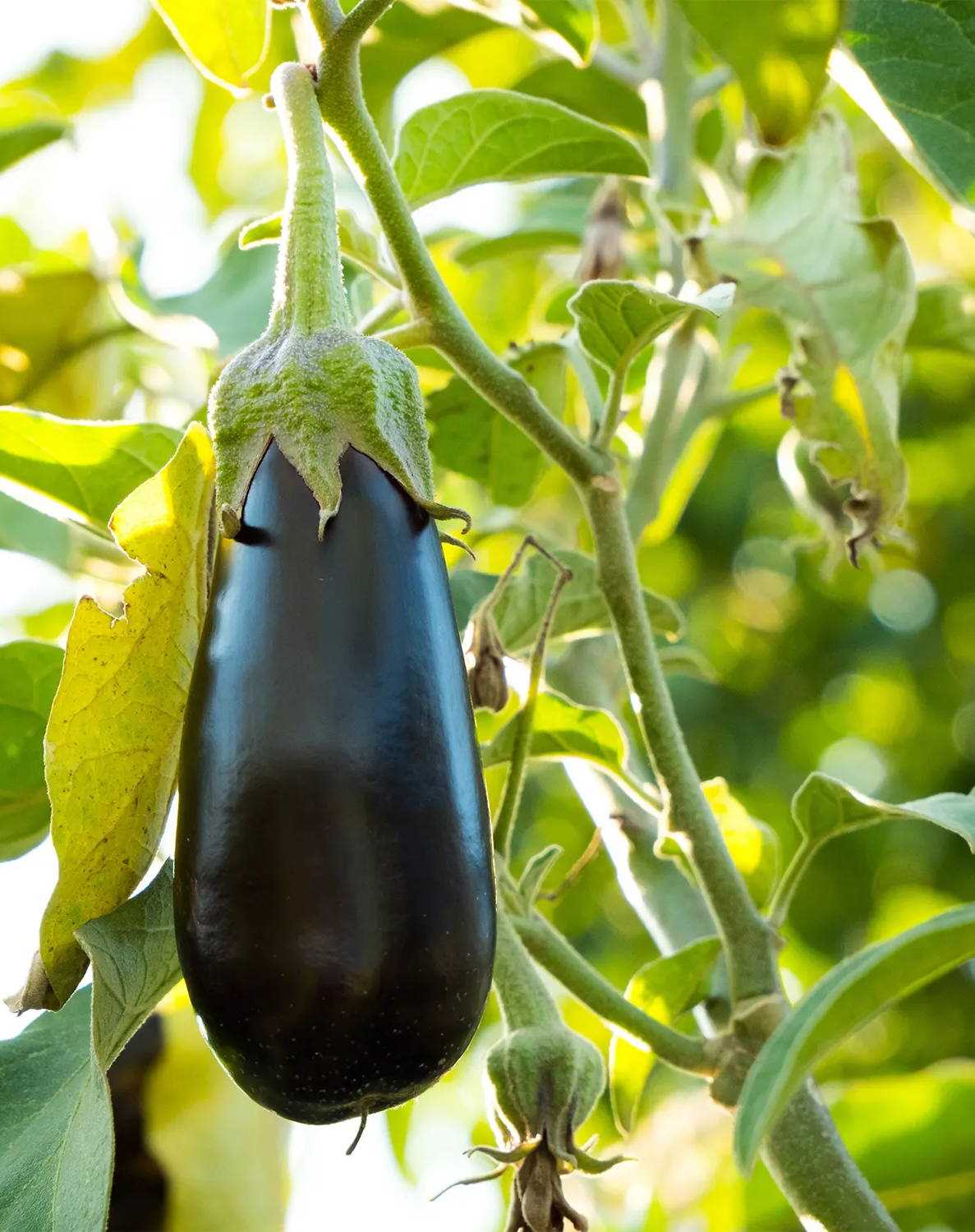
- Aubergines tend to have heavy fruits, so providing support is important to prevent the plants from falling over.
- Use trellises or stakes to support the plants and keep them upright.
- Set up the support system at the time of planting or shortly after, so that the plants can grow into them as they mature.
- Secure the plants to the trellises or stakes using soft ties or twine, making sure not to tie them too tightly to allow for growth.
Pruning
- Regularly prune the aubergine plants to remove excessive foliage and promote better airflow.
- Remove any suckers or side shoots that develop in the leaf axils.
- Prune the lower leaves that may come into contact with the soil to reduce the risk of disease.
By giving your aubergine plants proper spacing and support, you will help them grow strong and healthy, leading to a better harvest of delicious fruits.
Pest and Disease Resistance
Aubergines are susceptible to various pests and diseases that can impact their growth and productivity. When choosing aubergine varieties for open ground cultivation, it is important to consider their resistance to common pests and diseases.
Pests
- Aphids: Aphids are small insects that feed on aubergine plants by sucking sap from the leaves, stems, and fruits. Look for varieties that have resistance to aphids to prevent infestations.
- Whiteflies: Whiteflies are tiny white insects that can cause significant damage to aubergine plants by feeding on the leaves. Choose varieties that have resistance to whiteflies to avoid infestations.
- Spider mites: Spider mites are tiny arachnids that can infest aubergine plants and cause damage by feeding on the leaves. Look for varieties that are resistant to spider mites to protect your plants.
- Caterpillars: Caterpillars, such as the tomato hornworm, can feed on aubergine leaves and fruits, causing damage to the plants. Select varieties that are resistant to caterpillars to minimize damage.
Diseases
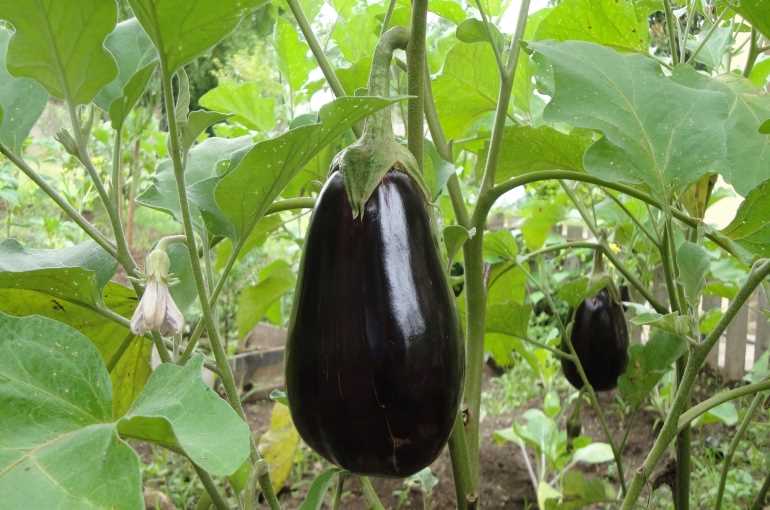
- Verticillium wilt: Verticillium wilt is a fungal disease that can affect aubergine plants, causing wilting, yellowing of leaves, and stunted growth. Choose varieties that are resistant to verticillium wilt to reduce the risk of infection.
- Phytophthora blight: Phytophthora blight is a fungal disease that can cause rotting of aubergine fruits and damping-off of seedlings. Look for varieties that have resistance to phytophthora blight to prevent disease spread.
- Bacterial wilt: Bacterial wilt is a disease caused by the bacteria Ralstonia solanacearum, which can infect aubergine plants and cause wilting and eventual death. Select varieties that are resistant to bacterial wilt to protect your crops.
- Early blight: Early blight is a fungal disease that can affect aubergine plants, causing dark lesions on leaves and fruits. Choose varieties that have resistance to early blight to minimize disease development.
By selecting aubergine varieties with resistance to common pests and diseases, you can improve the overall health and productivity of your plants, reducing the need for chemical interventions and ensuring a successful open ground cultivation.
Harvesting and Storage
When it comes to harvesting aubergines, timing is crucial. The fruit should be picked when they have reached their full maturity but before they become overripe. Overripe aubergines tend to have a tougher skin and more bitter taste.
Here are some tips for harvesting aubergines:
- Check the size and color: Ripe aubergines are usually around 6 to 8 inches long and have a glossy, smooth skin. The color of the fruit can vary depending on the variety, but it should have a rich, deep hue.
- Press the skin: Gently press the skin of the aubergine with your finger. If it springs back, it is not yet ripe. If it leaves an indentation, it is ready to be harvested.
- Use a sharp knife or shears: Cut the stem of the aubergine about half an inch above the fruit. Avoid pulling or twisting the fruit, as it can damage the plant.
- Harvest regularly: Check your plants regularly and harvest the aubergines as soon as they are ready. This will encourage the plant to produce more fruit.
Once you have harvested your aubergines, it is important to properly store them to ensure their freshness and flavor:
- Remove any dirt or debris: Gently wipe the aubergines with a clean, damp cloth to remove any dirt or debris on the skin.
- Avoid washing them: Aubergines are prone to absorbing water, which can affect their taste and texture. It is best to avoid washing them unless absolutely necessary.
- Store at room temperature: Aubergines can be stored at room temperature for up to a week. Keep them in a cool, dry place away from direct sunlight.
- Refrigerate if needed: If you need to store your aubergines for a longer period, you can place them in a perforated plastic bag in the refrigerator. They should be used within a few days.
By following these tips, you can ensure that your harvested aubergines stay fresh and delicious for as long as possible.
Taste and Culinary Uses
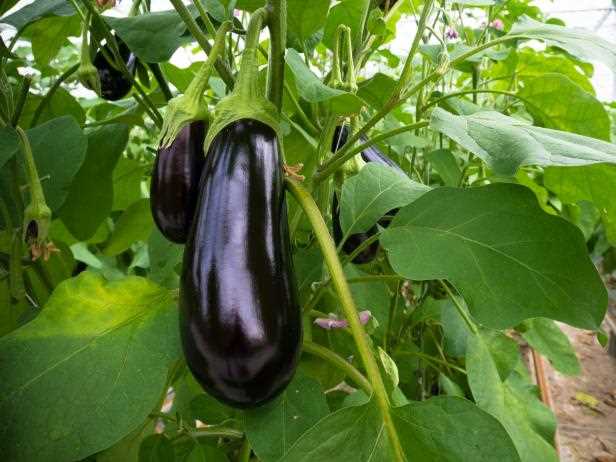
The taste of aubergines can vary depending on several factors, including the variety, freshness, and how it is cooked. However, most aubergines have a mild and slightly bitter flavor.
Aubergines are incredibly versatile and can be used in a wide range of culinary dishes. They can be sliced and grilled, roasted, fried, or used in stews, curries, and stir-fries. They are often used as a meat substitute in vegetarian and vegan dishes due to their meaty texture when cooked.
One popular dish that features aubergines is the classic Mediterranean dish, Moussaka. In this dish, aubergines are sliced and layered with minced meat, tomatoes, and bechamel sauce, then baked to perfection. Another popular dish is Baba Ganoush, a Middle Eastern dip made from roasted aubergines, tahini, garlic, lemon juice, and olive oil.
When choosing aubergines for culinary use, it is important to consider their firmness and freshness. Look for aubergines with a smooth, shiny skin that is free from blemishes and bruises. The flesh should feel firm and should not give too much when pressed.
| Preparation Method | Culinary Dish |
|---|---|
| Sliced and Grilled | Aubergine Steaks |
| Roasted | Ratatouille |
| Fried | Aubergine Parmigiana |
| Stewed | Moussaka |
| Curried | Aubergine Masala |
| Stir-Fried | Chinese-style Aubergine |
It is worth noting that the skin of aubergines is edible and can be left on during cooking. However, if desired, you can also peel the skin off before using them.
Overall, aubergines offer a unique and delicious flavor that can elevate many dishes. With their versatility and ability to absorb flavors, they are a great addition to any kitchen.
Availability and Cost
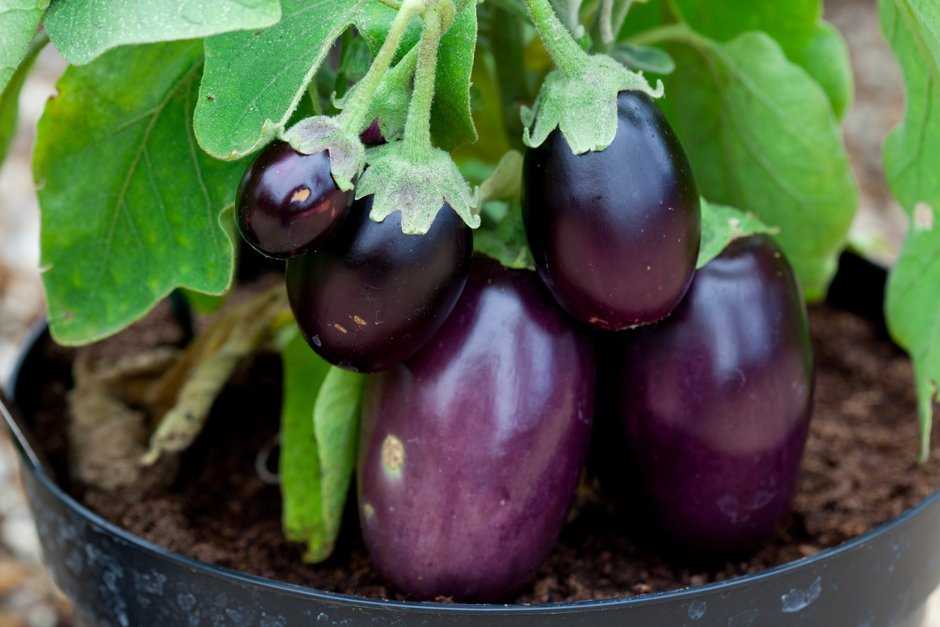
Seasonal Availability: Aubergines are typically available in the summer and early fall months when they are in season. Outside of these months, it may be more challenging to find fresh aubergines in the open market.
Local Produce: The availability of aubergines will also depend on the location and climate. Some areas may have a higher supply of locally grown aubergines, while others may rely on imports from different regions or countries.
Price Variations: The cost of aubergines can vary depending on factors such as the availability, quality, and demand. During peak season, when there is an abundance of aubergines, prices may be lower. However, prices may increase when aubergines are less available or imported from distant locations.
Organic and Specialty Aubergines: Organic or specialty varieties of aubergines may have a higher price point compared to conventional ones. These unique varieties might have specific qualities or flavors, making them more desirable to some consumers.
It is important to consider the availability and cost of aubergines before making a purchasing decision. Check local markets, grocery stores, and online vendors to compare prices and ensure that aubergines are available during the desired season. Taking these factors into account will help you plan and budget accordingly when including aubergines in your open ground gardening.
“Question-Answer”
What are the important factors to consider when choosing aubergines for open ground?
When choosing aubergines for open ground, there are several important factors to consider. First, you should consider the climate in your area. Aubergines require a warm and sunny climate to thrive. Additionally, you should consider the soil quality. Aubergines prefer well-drained soil that is rich in organic matter. Finally, you should consider the variety of aubergine you want to grow. There are many different varieties available, each with their own unique characteristics.
How does the climate affect the growth of aubergines in open ground?
The climate plays a crucial role in the growth of aubergines in open ground. Aubergines require a warm and sunny climate to thrive. They are native to the Indian subcontinent and prefer temperatures between 21-29°C (70-85°F). In cooler climates, aubergines may struggle to grow and produce fruit. Additionally, aubergines are highly sensitive to frost, so it is important to plant them after the danger of frost has passed.
What type of soil is best for growing aubergines in open ground?
Aubergines prefer well-drained soil that is rich in organic matter. The soil should have a pH level between 5.5 and 7.0. It is also important to ensure that the soil is free from any contaminants or pollutants. Adding compost or well-rotted manure to the soil before planting can help improve its fertility and structure, providing the ideal growing conditions for aubergines.
Are there different varieties of aubergines to choose from for open ground cultivation?
Yes, there are many different varieties of aubergines to choose from for open ground cultivation. Some popular varieties include ‘Black Beauty’, ‘Long Purple’, ‘Rosa Bianca’, and ‘Japanese Eggplant’. Each variety has its own unique characteristics, such as size, shape, color, and flavor. When choosing a variety, consider factors such as your climate, soil conditions, and personal preferences.
Can aubergines be grown in containers or pots?
Yes, aubergines can be grown in containers or pots. However, it is important to choose a variety that is suitable for container gardening, as some varieties may grow too large for a small pot. When growing aubergines in containers, make sure the pots have good drainage and are large enough to accommodate the plant’s root system. Additionally, container-grown aubergines may require more frequent watering and fertilization compared to those grown in open ground.







